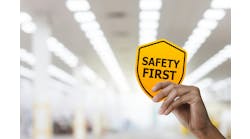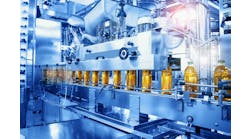What types of signaling devices make the most sense in hazardous locations?
Michael O'Neill, sales manager, Werma-USA: The main difference between equipment in hazardous and ordinary locations is the enclosure it resides in. For explosion-proof solutions getting a visual indication through a window of proper design to be explosion-proof is straightforward. Visual signals are commonly used. Issues occur when an audible signal is desired. Typically enclosures designed for explosion-proof areas—Class I, Div. 1 and Zone 1—do not vent sound well. For these applications if sound is required an intrinsically safe (IS) sounder with an IS Zener barrier is required. Since this design is inherently current limited, volume levels need to be considered. Additional sounders in strategic locations often resolve these concerns.
Carter Williams, product manager, Siemens: When using control devices in a hazardous location, special precautions must be taken to ensure the signaling device used doesn’t have the potential for igniting the fiber or gases that are present during operation. Class 51 pilot devices that are rated for NEMA 7 and 9 hazardous-location applications are suitable for most hazardous environments. There are several guidelines that have been set up to guide you with your product selection based on your specific hazardous environment. You should always reference your local codes and guidelines setup in the NFPA and/or ATEX, depending on which local codes apply in your region.
Tom Rosenberg, vice president of marketing and engineering, Balluff: Signaling devices for hazardous locations are more expensive; therefore, we typically see remote monitoring implemented. If operators are required in the hazardous area, fixed mounted signaling should focus on environmental conditions. As safe conditions decline, progressive warnings must be issued until an all-out evacuation signaling is required. At that point, signaling is augmented with high-intensity strobe and audible alarms with voice prompts.
Alex Dzatko, proposals specialist, process automation, Pepperl+Fuchs: There are very few hazardous-location rated stacklights. However, there are many hazardous-location-rated buzzers, horns and operating elements, such as pilot lights, illuminated pushbuttons and more. Also, there are many HMIs that are certified for use in hazardous areas. These HMIs can work with the hazardous-location-rated buzzers, horns and pilot lights to help to diagnose and control an operation.
















